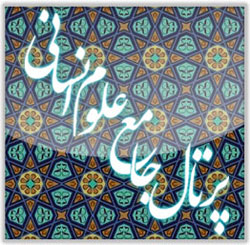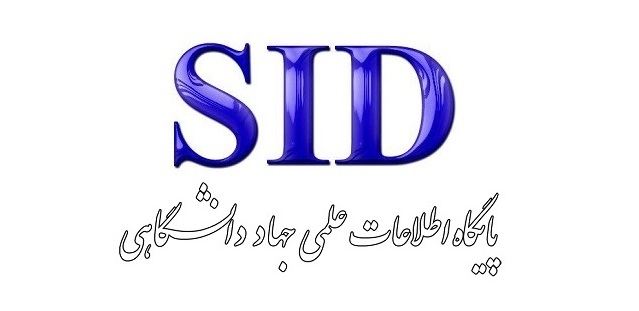Investigating the effect of poetic images on the audience in the common stories of Hadiqa Haqiqa Sana'i and Rumi's spiritual Masnavi
Keywords:
Influence, Imagery, Image, Ḥadīqat al-Ḥaqīqa, MathnawīAbstract
Imagery is one of the most significant literary tools for conveying meaning. What enhances the influence of poetic imagery is the poet’s imagination and creative visualization. The term image (or imagery) corresponds to imago, a concept originating from the literary movement known as Imagism, which emerged in early twentieth-century England under the leadership of Hume and was based on the ideas of the renowned French philosopher Bergson. Poets observe the world with awareness and employ images drawn from their surroundings to give concrete form to abstract and mental concepts. In doing so, they strive to transfer their mental creations to the audience, draw them into their imaginative world, and thereby communicate and extend their beliefs.
In both Ḥadīqat al-Ḥaqīqa and the Mathnawī, similar images appear; however, they differ in their modes of depiction. Due to these differences, the degree of impact each exerts upon the audience varies. In this study, conducted through a descriptive-analytical method, the images found in the parallel tales of Ḥadīqat al-Ḥaqīqa and the Mathnawī were identified and analyzed in terms of their effect on the audience. The findings revealed that the differing levels of impact stem from elements such as objectivity, embodiment, dynamism, imagination, optimism, communicative power, artistic expression, vivid description, and aesthetic beauty.
Downloads
References
1. Mohammadzadeh Alizamini Y. The Influence of Classical Persian Poets' Imagery on Nima's Visual Poetry. Journal of Contemporary Persian Literature. 2013.
2. Hemmatian M, Ghafouri A. Rhetorical Analysis of Imagery Domains in Fazel Nazari's Poetry. Journal of Literary Techniques. 2019.
3. Salajegheh P. From This Eastern Garden: Institute for the Intellectual Development of Children and Adolescents; 2008.
4. Hemmati C. Comparison of Nature Imagery in Mystical Masnavis of the 7th Century 2019.
5. Zarrinkoub A. Poetry Without Lies, Poetry Without Masks: Elmi Publications; 1993.
6. Tahmasebi F, Saremi Z. Examining Imagery and Introducing Its Types in Ahmad Shamloo's Poetry. Journal of Literary Studies. 2014.
7. Fotouhi M. Analysis of the Image of the Sea in Masnavi. Journal of Humanities, Shahid Beheshti University. 2001.
8. Shafi'i Kadkani MR. Imagery in Persian Poetry: Agah Publications; 1987.
9. Omidali H, Dehrami M. Aesthetic Aspects of Imagery and Its Harmony with Emotion and Thought in Nosrat Rahmani's Poetry. Journal of Grammatical and Rhetorical Studies. 2017.
10. Zarrinkoub A. Exploration in Iranian Mysticism: Amir Kabir Publications; 1990.
11. Zarrinkoub A. Literary Criticism: Amir Kabir Publications; 1990.
12. Abbaspour Tamijani MH. The Transformed Sensitivity of the Modern World and Modern Literature. Negin Journal. 1969.
13. Perrine L. Poetry and Poetic ElementsPB - Rahnama Publications2000.
14. Forouzanfar Ba-Z, Mojtaba D. Hadiths and Stories of Rumi's Masnavi: Amir Kabir Publications; 1997.
15. Moradi M. Diversity of Color Distinction in Manzavi's Poetry and Analysis of Its Innovative and Imitative Aspects. Journal of Poetry Studies. 2016.
16. Kazazi MJa-D. Aesthetics of Persian Speech: Markaz Publishing; 1989.
17. Rezaei Jamkarani A. Simile: Evolution, Analysis, and Critique: Morvarid PublicationsER -; 2017.
18. Masbooq M, Ghaemi M, Farokhi Rad P. Examining the Dynamism and Vitality of Imagery in Al-Mutanabbi's Poetry. Lisan Mobin. 2011.
19. Fotouhi Rudmajani M. The Rhetoric of Imagery: Sokhan Publishing; 2006.
20. Dorry Z. Explanation of the Difficulties of Sana'i's Hadiqat al-Haqiqah: Zavvar Publications; 2013.
21. Shafi'i Kadkani MR. The Poet of Mirrors: Agah Publications; 1997.
22. Kolahchian F, Noraei E, Nazari Far F. Reflection on the Content Function of Color in Rumi's Ghazals. Journal of Literary Text Studies. 2017.
23. Partovi S. Structural Comparison of Shared Stories in Sana'i's Hadiqah and Rumi's Masnavi. Journal of Text Criticism, Analysis, and Aesthetics. 2022.
24. Pourhosseini M. The Meaning of Color: Honar Abi PublishingER -; 2005.
25. Luscher M. Psychology and Colors: Afarinesh Publishing; 1994.
26. Noble W. Suspense and Narrative Action: Resh Publications; 2008.
27. Mosharraf M. Rumi and Mystical Interpretation: Sokhan Publishing; 2016.
28. Safaei Sangari A, Alyani R. Semiotics of the Animal Symbol of the Lion in Shams' Ghazals. Journal of Mysticism. 2018.
29. Fatehi S, Ghahramani A. The Function of the Element of Color in Masnavi. Bahar Sokhan. 2017.
30. Dastgheib A. Imagery in Poetry. Negin Journal. 1969.
31. Fallah G, Zarei M. Indian Style in Fazel Nazari's Poetry. Khwarazmi University Press. 2015.
32. Shamisa C. Stylistics of Persian Poetry: Ferdows Publications; 1999.
33. Farzi Shoob M. From Sea to River: Khamoosh Publishing; 2020.
Downloads
Published
Submitted
Revised
Accepted
Issue
Section
License
Copyright (c) 2025 علی ایمانی زاده (نویسنده); مریم خادم ازغدی; فاطمه حیدری, عطاالله کوپال (نویسنده)

This work is licensed under a Creative Commons Attribution-NonCommercial 4.0 International License.








